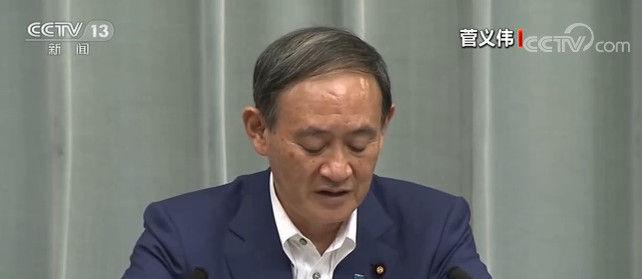в—Ҹ readObjectж–№жі•д»Һиҫ“е…ҘжөҒпјҲObjectInputStreamпјүдёӯиҜ»еҮәеҜ№иұЎе№¶дҝқеӯҳиөӢеҖјеҲ° elementDataж•°з»„дёӯ гҖӮ
иҮіжӯӨпјҢжҲ‘们еӣһзӯ”еҲҡжүҚжҸҗеҮәзҡ„й—®йўҳпјҡеҰӮдҪ•иҮӘе®ҡд№үеәҸеҲ—еҢ–е’ҢеҸҚеәҸеҲ—еҢ–зҡ„зӯ–з•Ҙпјҹ
зӯ”пјҡеҸҜд»ҘеңЁиў«еәҸеҲ—еҢ–зҡ„зұ»дёӯеўһеҠ writeObjectе’ҢreadObjectж–№жі• гҖӮ
й—®йўҳеҸҲжқҘдәҶпјҡиҷҪ然ArrayListдёӯеҶҷдәҶwriteObjectе’ҢreadObjectж–№жі•пјҢдҪҶжҳҜиҝҷдёӨдёӘ方法并没жңүжҳҫејҸең°иў«и°ғз”Ё гҖӮ
еҰӮжһңдёҖдёӘзұ»дёӯеҢ…еҗ«writeObjectе’ҢreadObject ж–№жі•пјҢйӮЈд№ҲиҝҷдёӨдёӘж–№жі•жҳҜжҖҺд№Ҳиў«и°ғз”Ёзҡ„е‘ўпјҹ
4.ObjectOutputStreamеҜ№иұЎзҡ„еәҸеҲ—еҢ–иҝҮзЁӢжҳҜйҖҡиҝҮObjectOutputStreamе’ҢObjectInputStreamе®һзҺ°зҡ„пјҢеёҰзқҖеҲҡжүҚзҡ„й—®йўҳпјҢжҲ‘们еҲҶжһҗдёҖдёӢArrayListдёӯзҡ„writeObjectе’ҢreadObjectж–№жі•еҲ°еә•жҳҜеҰӮдҪ•иў«и°ғз”Ёзҡ„ гҖӮ
дёәдәҶиҠӮзңҒзҜҮе№…пјҢиҝҷйҮҢз»ҷеҮәObjectOutputStreamзҡ„writeObjectзҡ„и°ғз”Ёж Ҳпјҡ
writeObject ---> writeObject0 --->writeOrdinaryObject--->writeSerialData--->invokeWriteObjectinvokeWriteObject еҰӮдёӢпјҡvoid invokeWriteObject(Object obj, ObjectOutputStream out)throws IOException, UnsupportedOperationException{if (writeObjectMethod != null) {try {writeObjectMethod.invoke(obj, new Object[]{ out });} catch (InvocationTargetException ex) {Throwable th = ex.getTargetException();if (th instanceof IOException) {throw (IOException) th;} else {throwMiscException(th);}} catch (IllegalAccessException ex) {// should not occur,as access checks have been suppressedthrow new InternalError(ex);}} else {throw new UnsupportedOperationException();}}е…¶дёӯwriteObjectMethod.invoke(obj, new Object[]{ out })жҳҜе…ій”®пјҢйҖҡиҝҮеҸҚе°„зҡ„ж–№ејҸи°ғз”ЁwriteObjectMethodж–№жі• гҖӮе®ҳж–№жҳҜиҝҷд№Ҳи§ЈйҮҠиҝҷдёӘwriteObjectMethodзҡ„пјҡ
class-defined writeObject method, or null if noneеңЁжҲ‘们зҡ„дҫӢеӯҗдёӯпјҢиҝҷдёӘж–№жі•е°ұжҳҜеңЁArrayListдёӯе®ҡд№үзҡ„writeObjectж–№жі•пјҢйҖҡиҝҮеҸҚе°„зҡ„ж–№ејҸиў«и°ғз”ЁдәҶ гҖӮ
иҮіжӯӨпјҢжҲ‘们еӣһзӯ”еҲҡжүҚжҸҗеҮәзҡ„й—®йўҳпјҡеҰӮжһңдёҖдёӘзұ»дёӯеҢ…еҗ«writeObjectе’ҢreadObjectж–№жі•пјҢйӮЈд№ҲиҝҷдёӨдёӘж–№жі•жҳҜжҖҺд№Ҳиў«и°ғз”Ёзҡ„е‘ўпјҹ
зӯ”пјҡеңЁдҪҝз”ЁObjectOutputStreamзҡ„writeObjectж–№жі•е’ҢObjectInputStreamзҡ„readObjectж–№жі•ж—¶пјҢдјҡйҖҡиҝҮеҸҚе°„зҡ„ж–№ејҸи°ғз”Ё гҖӮ
жңүзҡ„иҜ»иҖ…еҸҜиғҪдјҡжҸҗеҮәиҝҷж ·зҡ„з–‘й—®пјҡSerializableжҳҺжҳҺе°ұжҳҜдёҖдёӘз©әзҡ„жҺҘеҸЈпјҢе®ғжҳҜжҖҺд№ҲдҝқиҜҒеҸӘжңүе®һзҺ°дәҶиҜҘжҺҘеҸЈзҡ„ж–№жі•жүҚиғҪиҝӣиЎҢеәҸеҲ—еҢ–дёҺеҸҚеәҸеҲ—еҢ–зҡ„е‘ўпјҹ
SerializableжҺҘеҸЈзҡ„е®ҡд№үеҰӮдёӢпјҡ
public interface Serializable {}еҪ“е°қиҜ•еҜ№дёҖдёӘжңӘе®һзҺ°SerializableжҲ–иҖ…ExternalizableжҺҘеҸЈзҡ„еҜ№иұЎиҝӣиЎҢеәҸеҲ—еҢ–ж—¶пјҢдјҡжҠӣеҮә
java.io.NotSerializableExceptionејӮеёё гҖӮ
е…¶е®һиҝҷдёӘй—®йўҳд№ҹеҫҲеҘҪеӣһзӯ”пјҢжҲ‘们еҶҚеӣһеҲ°еҲҡжүҚObjectOutputStreamзҡ„writeObjectзҡ„и°ғз”Ёж Ҳпјҡ
writeObject0ж–№жі•дёӯжңүеҰӮдёӢдёҖж®өд»Јз Ғпјҡ
if (obj instanceof String) {writeString((String) obj, unshared);} else if (cl.isArray()) {writeArray(obj, desc, unshared);} else if (obj instanceof Enum) {writeEnum((Enum<?>) obj, desc, unshared);} else if (obj instanceof Serializable) {writeOrdinaryObject(obj, desc, unshared);} else {if (extendedDebugInfo) {throw new NotSerializableException(cl.getName() + "n" + debugInfoStack.toString());} else {throw new NotSerializableException(cl.getName());}}еңЁиҝӣиЎҢеәҸеҲ—еҢ–ж“ҚдҪңж—¶пјҢдјҡеҲӨж–ӯиҰҒиў«еәҸеҲ—еҢ–зҡ„зұ»жҳҜеҗҰжҳҜEnumгҖҒArrayе’ҢSerializableзұ»еһӢпјҢеҰӮжһңдёҚжҳҜеҲҷзӣҙжҺҘжҠӣеҮәNotSerializableExceptionејӮеёё гҖӮ
е°Ҹз»“пјҲ1пјүеҰӮжһңдёҖдёӘзұ»жғіиў«еәҸеҲ—еҢ–пјҢеҲҷйңҖиҰҒе®һзҺ°SerializableжҺҘеҸЈпјҢеҗҰеҲҷе°ҶжҠӣеҮәNotSerializable-ExceptionејӮеёёпјҢиҝҷжҳҜеӣ дёәеңЁеәҸеҲ—еҢ–ж“ҚдҪңиҝҮзЁӢдёӯдјҡеҜ№зұ»зҡ„зұ»еһӢиҝӣиЎҢжЈҖжҹҘпјҢиҰҒжұӮиў«еәҸеҲ—еҢ–зҡ„зұ»еҝ…йЎ»еұһдәҺEnumгҖҒArrayе’ҢSerializableзұ»еһӢдёӯзҡ„д»»дҪ•дёҖз§Қ гҖӮ
пјҲ2пјүеңЁеҸҳйҮҸеЈ°жҳҺеүҚеҠ дёҠе…ій”®еӯ—transientпјҢеҸҜд»Ҙйҳ»жӯўиҜҘеҸҳйҮҸиў«еәҸеҲ—еҢ–еҲ°ж–Ү件дёӯ гҖӮ
пјҲ3пјүеңЁзұ»дёӯеўһеҠ writeObjectе’ҢreadObjectж–№жі•еҸҜд»Ҙе®һзҺ°иҮӘе®ҡд№үзҡ„еәҸеҲ—еҢ–зӯ–з•Ҙ гҖӮ
гҖҗJavaдёӯпјҢеәҸеҲ—еҢ–еҸҠеҸҚеәҸеҲ—еҢ–зҡ„еә•еұӮеҺҹзҗҶгҖ‘
еҶ…е®№ж‘ҳиҮӘгҖҠж·ұе…ҘзҗҶи§ЈJavaж ёеҝғжҠҖжңҜгҖӢпјҢдҪңиҖ…жҳҜHollisпјҢеј жҙӘдә®пјҢйҳҝйҮҢе·ҙе·ҙжҠҖжңҜ专家пјҢ51CTO дё“ж ҸдҪң家пјҢCSDN еҚҡ客专家пјҢжҺҳйҮ‘дјҳз§ҖдҪңиҖ…пјҢгҖҠзЁӢеәҸе‘ҳзҡ„дёүй—ЁиҜҫгҖӢиҒ”еҗҲдҪңиҖ…пјҢгҖҠJavaе·ҘзЁӢеёҲжҲҗзҘһд№Ӣи·ҜгҖӢзі»еҲ—ж–Үз« дҪңиҖ…пјӣзғӯиЎ·дәҺеҲҶдә«и®Ўз®—жңәзј–зЁӢзӣёе…іжҠҖжңҜпјҢеҚҡж–Үе…ЁзҪ‘йҳ…иҜ»йҮҸж•°еҚғдёҮ гҖӮ
жҺЁиҚҗйҳ…иҜ»
- |иҒҢеңәдёӯжңүе“Әдәӣеёёи§Ғзҡ„еҘ—и·Ҝпјҹ
- и…ҫи®Ҝ|зҰҸеёғж–Ҝ2022дёӯеӣҪж•°еӯ—з»ҸжөҺ100ејәеҮәзӮүпјҡи…ҫи®Ҝ第дёҖ е°Ҹзұіз¬¬еҚҒ
- е№је„ҝеӣӯдёӯзҸӯи®ЎеҲ’зІҫеҚҺзҜҮ дёӯзҸӯзҸӯеҠЎи®ЎеҲ’
- дёӯеӯҰз”ҹеҺҹеҲӣ科幻дҪңж–Ү?жўҰеӣһе”җжңқ жўҰеӣһе”җжңқдҪңж–Ү
- |29еІҒеӨұдёҡдёӯе№ҙйғҺзҡ„иҮӘиҝ°пјҡиҒҢеңәйҒҮеҲ°дёҚе…¬
- иҖҒе№ІеҰҲжІ№иҫЈжӨ’зҡ„еҒҡжі•
- йёӯиЎҖеҗғеӨҡдәҶдјҡжҖҺд№Ҳж ·
- жІ№й—·иҫЈжӨ’зҡ„еҒҡжі•
- жҺЁиҚҗеҮ йғЁжҲ‘еҝғдёӯеҘҪзңӢзҡ„з©ҝи¶Ҡеү§ жҜ”иҫғеҘҪзңӢзҡ„з©ҝи¶Ҡеү§
- |иҒҢеңәдёӯеҒ·жҮ’жҮ’жғ°зҡ„дәәпјҢйғҪжҳҜиҝҷж ·еҒҡзҡ„

















